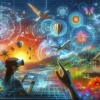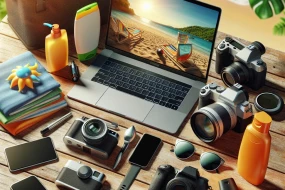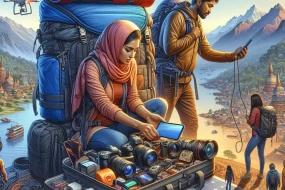
As the world becomes more interconnected, the travel industry is undergoing a revolutionary transformation. Virtual Reality (VR) is at the forefront of this change, offering immersive experiences that are reshaping how we perceive and engage with tourism. Imagine exploring the ancient ruins of Machu Picchu or the bustling streets of Tokyo without ever leaving your living room. This isn't science fiction—it's the future of travel.
A New Dimension in Travel
Virtual Reality is not just a tech buzzword; it's a gateway to new dimensions in travel. By donning a VR headset, travelers can explore destinations with a level of detail and immersion that traditional media simply can't match. The technology allows users to experience the sights and sounds of a place in real-time, making it a powerful tool for both armchair travelers and those planning their next big adventure. Imagine standing on the edge of the Grand Canyon, the wind in your hair, without the need to book a flight or take time off work.
Enhancing Travel Planning
Planning a trip can often be overwhelming, with countless options and decisions to make. Virtual Reality simplifies this process by providing a 'try before you buy' experience. Potential tourists can virtually visit hotels, explore amenities, and even preview local attractions. This not only helps in making informed decisions but also builds excitement and anticipation. Companies like Expedia are already utilizing VR to showcase hotel rooms and destinations, allowing travelers to make bookings with confidence.
Bringing Accessibility and Inclusivity
Travel is an enriching experience, but not everyone has the means or ability to explore the world physically. VR democratizes travel by making it accessible to those with physical disabilities, financial constraints, or time limitations. Educational institutions are using VR to offer virtual field trips, providing students with a global perspective without leaving the classroom. This inclusive approach ensures that everyone can experience the wonders of the world, regardless of their circumstances.
The Role of VR in Cultural Preservation
Cultural heritage sites are often fragile, subject to the ravages of time and tourism. Virtual Reality offers a solution by digitally preserving these sites, allowing future generations to experience them in their original splendor. Through detailed 3D scans and models, VR can recreate historical landmarks, providing a virtual tour that is both informative and respectful of the site's integrity. This technology ensures that cultural treasures are not lost to history, but rather, shared with the world.
Challenges and Limitations
While VR holds immense potential, it's not without its challenges. High-quality VR experiences require sophisticated equipment and fast internet, which may not be accessible to everyone. Additionally, the technology is still evolving, and some experiences may not yet replicate the full sensory experience of actual travel. However, as technology advances and becomes more affordable, these barriers are likely to diminish. It's important for developers and companies to focus on creating content that is both engaging and realistic, avoiding the trap of gimmicky or superficial experiences.
The Future Outlook
As VR technology continues to advance, its integration into the travel industry will likely deepen. The potential for VR to complement traditional travel is vast, offering pre-trip previews, virtual souvenirs, and even augmented reality experiences that enhance real-world exploration. In the future, we may see VR as a standard tool in travel agencies, schools, and homes, enriching our understanding of the world and inspiring a new generation of explorers. The journey is just beginning, and the possibilities are as limitless as our imagination.































